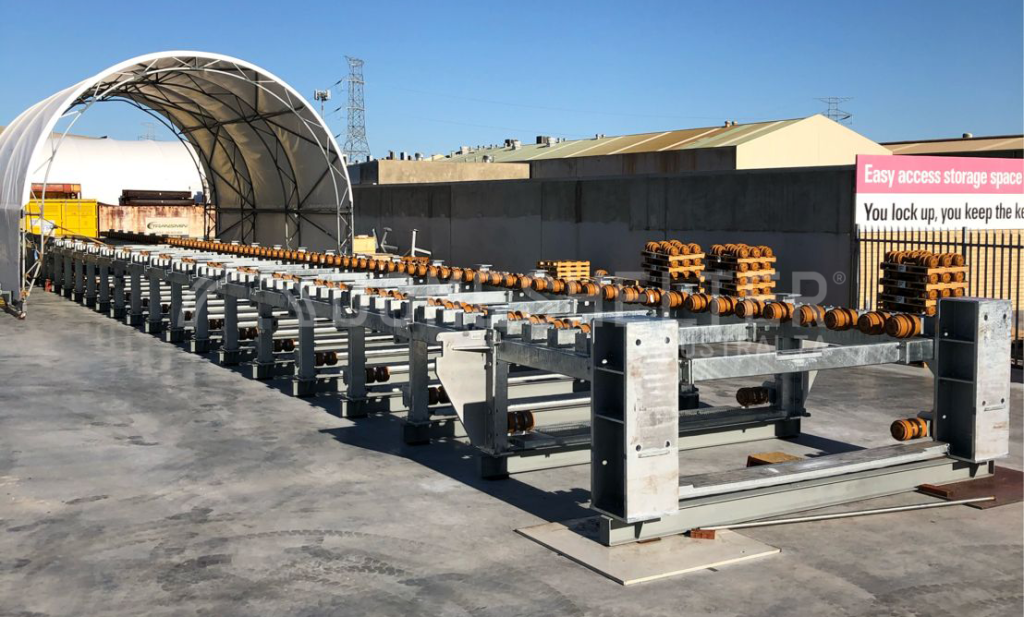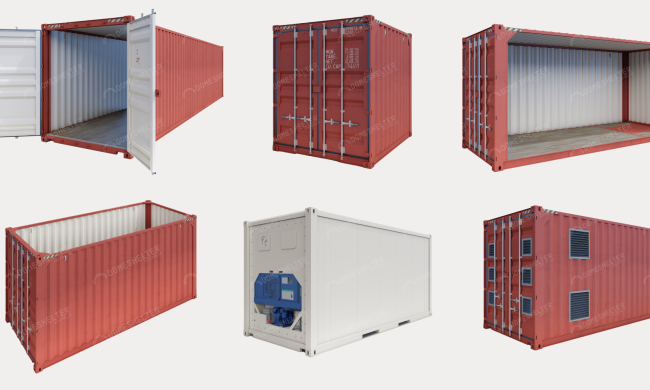
Many worksites, particularly Industrial sites, highly value flexibility in their operations. This is where Wheel-Mounted Fabric Shelters, also known as Rolling Shelters, have gained popularity. These innovative Structures offer the convenience of easy relocation, allowing businesses to adapt to changing operational needs and make the most of their available space.
While the mobility and versatility of Wheel-Mounted Fabric Shelters have proven valuable in various industries, it’s essential to recognize that their unique design and engineering requirements can lead to unexpected expenses. In this article, we aim to provide transparency and education about Wheel-Mounted Fabric Shelters, ensuring that clients considering these Structures are fully informed.
Wheel Mounted Fabric Shelters
Clients may see wheelable Shelters as offering great benefit in the sense that it provides the potential for a fully enclosed space or cover to protect against the elements that, rather than being fixed in place by footings or a container, can be dynamic and shift throughout the yard or site to aid a range of operations.
The key advantages of mounting a Fabric Shelter on wheels are clear:
- Portability
- Flexibility
- Unique work options
Wheelable Shelters, due to their inherent impermanent nature, likely wouldn’t be suitable for any significantly long-term use due to the lack of hold downs. However, for weather-sensitive work or other projects that require a dynamic Shelter Solution, a wheelable Shelter may be the preferred option.
DomeShelter Australia has completed wheel-mounted Shelter projects in the past, for a series of different applications.
For example, Transmin were provided an 8m x 12m Wheelable Shelter to help optimise their manufacturing process. The Shelter being on wheels allows them to move it along feeders, conveyors and other similar products while staff are working. This keeps staff protected from the elements while maintaining efficient workflow.
Engineering Considerations
There are a number of key considerations that need to be made when approaching a wheel-mounted Fabric Shelter project.
Having a Shelter on wheels with no permanent footings can complicate the engineering process. In the specific case of DomeShelter Australia, we have strict quality standards and only manufacture Fabric Shelters that are fully compliant with AS1170.2:2021 – Wind Actions.
Ensuring a DomeShelter™ Structure on wheels is easily movable while remaining compliant and safe is a complex process. As with anything that requires more intensive engineering computations, more time and attention to detail, this comes at an added cost that clients may not initially anticipate.
There are size constraints related to designing and manufacturing a safe wheelable Shelter – a 20m wide Shelter on wheels, for example, is beyond what would be considered practical. Past wheelable Fabric Shelter projects DomeShelter Australia has undertaken have typically been capped at 10m wide. This is done to contain the surface area that the wind can exert pressure on, which has considerable implications for engineering to AS1170.2.
Even wheel-mounted Shelters need to be ‘held down’, in the sense that they need to be secured while in use to withstand any wind event that may occur. The frame of the Shelter will be engineered to suit the correct wind rating, but in the absence of permanent foundations the Shelter will still need securing in some way. This is in some ways the biggest paradox when approaching a wheel-mounted option, in the sense that clients may not anticipate the need to secure a Shelter that is ‘mobile’.
There are a few key options for securing wheelable Shelters:
- A mechanism allowing the wheels to be ‘lifted’ out of the way once the Shelter is in place, which sits the Shelter onto the ground. Having the Shelter frame directly on the ground creates greater friction to prevent movement. The Shelter can then be jacked back up onto the wheels when it next needs to be moved.
- Pre-cast concrete blocks are by far the most common method of holding down a wheel mounted Shelter to prevent unintentional movement. The Shelter may have chains or other attachment points to secure it to these blocks, which can then be disconnected to allow free movement when required.
- Past clients –particularly Industrial clients on worksites with pre-existing hardstand, concrete slabs, or similar surfaces – have had anchoring points incorporated into the hardstand (or similar equivalent) for the Shelter to then be attached to in order to prevent movement.
Fabric Shelters on Wheels: Summary
Wheel-mounted or rollable Fabric Shelters are an attractive choice for clients who value a flexible and mobile Shelter Solution for their worksite. These Structures offer the convenience of easy relocation, allowing businesses to adapt to changing operational needs and optimise their available space.
-
The key advantages of mounting a Fabric Shelter on wheels are clear: portability, flexibility, and unique work options.
-
It’s crucial to understand the engineering considerations involved in wheel-mounted Shelter projects. DomeShelter Australia strictly adheres to quality standards and manufactures Fabric Shelters that comply with AS1170.2:2021.
-
Size constraints also need to be considered, with wheel-mounted Fabric Shelters typically limited to 10 meters in width to manage wind pressures effectively.
-
Even though these structures are designed to be mobile, they still require securing to withstand wind events. Options for securing wheelable Shelters include mechanisms to lift the wheels off the ground when in place or using pre-cast concrete blocks as anchor points.
-
DomeShelter Australia has completed Wheel-Mounted Shelter projects in the past for clients who request them.
By providing this comprehensive overview, we aim to empower clients with the knowledge they need to make informed decisions about Wheel-Mounted Fabric Shelters.
The DomeShelter™ Team is committed to delivering fully Fit-For-Purpose Fabric Shelter Solutions that respond to the needs of every individual client, leveraging over 25 years’ experience and product testing to deliver the best outcomes. Our Team is always available to chat through your project needs to provide the best solution. .
For more information about DomeShelter Australia’s products and processes, you can visit the Learning Centre on our website. You can also contact the team directly to chat to one of our knowledgeable team today.












